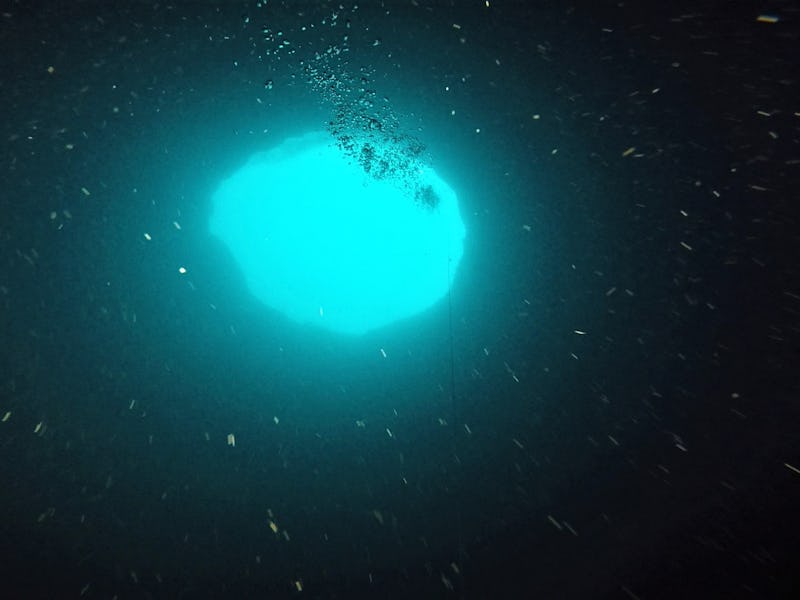Blue Hole: The strange ocean phenomenon scientists are exploring this month
Meet the "Green Banana."

In a new mission, the National Oceanic and Atmospheric Administration (NOAA) is going deep underwater. And they aren't stopping at the seafloor.
In August 2020, NOAA will begin exploring a massive blue hole — essentially an underwater sinkhole — off the coast of Florida. Nicknamed "Green Banana," the blue hole is larger and deeper than nearby blue holes. The new research will help determine the protection status of the area, and whether Florida's blue holes are home to new species of microbes.
Blue holes take the mysteries of the deep sea even deeper. The massive holes can be hundreds of feet deep, which causes them to appear a darker blue, compared to more shallow surroundings.
NOAA's Green Banana mission is planned as a follow-up to explorations conducted in 2019. The previous work looked at Amberjack Hole, located about 30 miles west of Sarasota. Green Banana is even larger and deeper: Its rim is 155 feet below sea level, and its bottom extends 425 feet down.
Among the goals of NOAA'S blue hole research is determining whether the Amberjack Hole should become a protected area. A blue hole can be an "oasis in an otherwise barren seafloor," NOAA reports. The natural phenomena are biodiversity hotspots teeming with plants and animals, including sea turtles, sharks, corals, mollusks, and sponges.
The opening of Amberjack Hole, from below.
NOAA researchers also hope to better characterize Florida's blue holes by determining whether they are connected to groundwater, secreting their own nutrients, or home to new species of microbes.
Exploring blue holes — Researchers believe that blue holes are formed when water floods a previously cavernous region. At the end of the Ice Age, for instance, rising sea levels flooded caves that had been carved out by environmental factors like acidic rain, Discovery reports. The process can take more than 100,000 years.
The world's largest blue hole is the Great Blue Hole, located off the coast of Belize. A 2018 exploration co-led by Richard Branson set out to map the blue hole using sonar scans. The mission avoided landing at the hole's bottom so as not to disturb the ecosystem within the blue hole.
In Florida's blue holes, analyses of water samples taken during the Amberjack Hole exploration have shown that isotopes of radium and radon are present in the water. The chemistry suggests that these holes are connected to groundwater — linking Florida's freshwater aquifer to the ocean.
The water chemistry also showed that microbes in the Amberjack Hole come in different varieties, stratified by how deep in the water they live. And researchers found that nutrients seem to be coming from the bottom sediment layer, which gives way to life above. Further analyses will help researchers understand how microbes and carbon-rich environments work together to support a diverse variety of plants and animals that live in blue holes.
As the new mission sets out this month, NOAA researchers will use the same techniques developed for studying the Amberjack Hole. But Green Banana will pose some challenges, too: The hole appears to be "somewhat hourglass-shaped," NOAA reports, meaning landing and sampling water could be trickier than in the past.
The first trip is scheduled for August 2020, NOAA says, with work expected to continue in 2021.